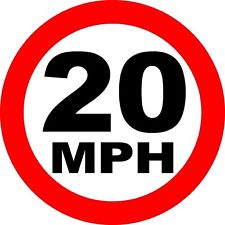New government statistics say there were 521 accidents on York’s road during 2013.
There were no fatalities although there were 58 serious and 463 minor accidents.

Although the wide area 20 mph speed limit was introduced towards the end of the year and will have little impact on the numbers, elsewhere in the country serious accident levels in 20 mph limit area increased by 29 per cent while slight casualties went up by 19 per cent.
This confirms a trend form previous years.
In the same year, there was a decrease in the number of serious and slight accidents on 30mph roads and 40 mph roads.
Serious accidents went down nine per cent on 30mph roads and seven per cent on 40 mph roads.
There was a five per cent reduction in slight accidents on 30 mph roads and a three per cent decrease on 40 mph roads.
The York council has always claimed that the main aim of the new 20 mph speed limits – which are widely ignored by drivers – was not to reduce accidents.
They have always failed to explain why they think the £0.6 million cost of the schemes could not be more usefully spent at accident blackspots.
The Institute of Advanced Motorists chief executive Simon Best commented:
“The government and councils need to take stock on the effectiveness of 20mph signs. Recent advice, guidance and relaxation of regulations have all been about making it easier for councils to put 20mph limits in place.
“More and more roads are being given a 20mph limit but they do not seem to be delivering fewer casualties.
The IAM are concerned that this is because simply putting a sign on a road that still looks like a 30mph zone does not change driver behaviour.
More evaluation and research is needed into the real world performance of 20mph limits to ensure limited funds are being well spent. In locations with a proven accident problem, authorities need to spend more on changing the character of our roads so that 20mph is obvious, self-enforcing and above all contributes to fewer injuries.
In Europe, it is long term investment in high quality segregated or shared surfaces that have led to a much safer environment for cyclists and pedestrians.”
